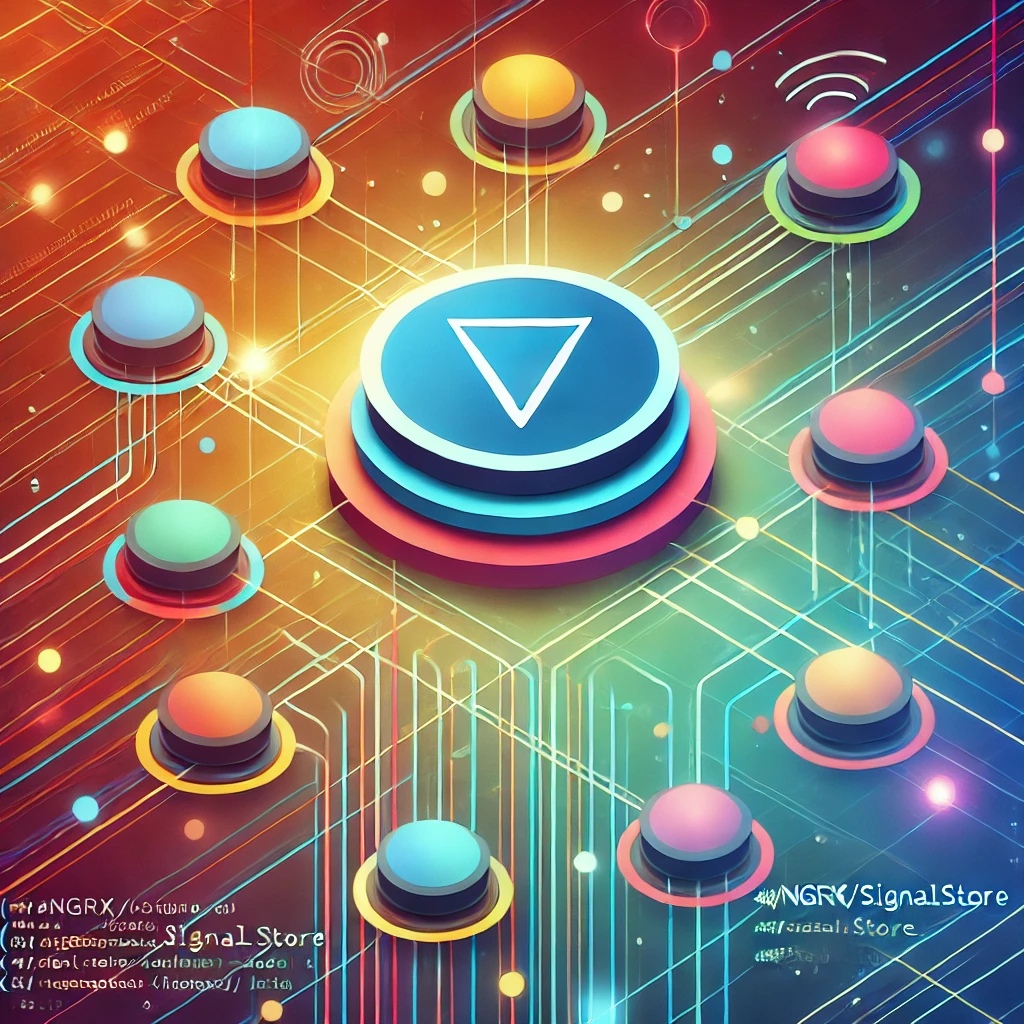Table of Contents
@ngrx/signalstore is a state management library in Angular applications, providing developers with the ability to manage reactive state efficiently. It is a part of the NgRx ecosystem, which offers robust solutions for building reactive applications. Signalstore allows developers to handle state updates with ease, ensuring that the application remains performant and easy to maintain.
In this article, we’ll explore the various features of @ngrx/signalstore, its integration with Angular, and how it helps manage application state effectively. By the end, you’ll have a comprehensive understanding of how to utilize this tool to enhance your Angular projects.

What is @ngrx/signalstore?
@ngrx/signalstore is a state management solution designed for Angular developers. It works by offering a store that signals changes in state, making it easier to track and manage state transitions. This library is highly recommended for large-scale applications where multiple components need to interact with the state. @ngrx/signalstore:
@ngrx/signalstore: With its built-in mechanisms, signalstore ensures that the state remains predictable and easy to debug. Developers can rely on this system to maintain consistency across their application, no matter how complex the state management needs become. @ngrx/signalstore:
@ngrx/signalstore: Furthermore, @ngrx/signalstore simplifies state management by reducing the boilerplate code typically required in traditional state management solutions. This enables developers to focus more on the application’s logic and less on managing complex state transitions. @ngrx/signalstore:
Key Features of @ngrx/signalstore
@ngrx/signalstore comes with several key features that make it an ideal choice for state management in Angular applications. @ngrx/signalstore: One of the most prominent features is its ability to signal changes in state automatically, ensuring that components are updated efficiently. @ngrx/signalstore:
Another feature is the strong integration with the Angular framework, which allows for seamless handling of state across different parts of the application. It also offers a clear API for accessing and updating the state, making it easy for developers to implement.
Signalstore also provides built-in tools for debugging, allowing developers to track state changes and troubleshoot issues quickly. This feature is particularly useful for large applications where managing state can become a challenge.
Additionally, @ngrx/signalstore is designed to work with other NgRx libraries, providing a cohesive solution for building reactive applications. Its interoperability with other tools makes it a flexible choice for Angular developers.
How to Set Up @ngrx/signalstore in Angular Projects
@ngrx/signalstore:Setting up @ngrx/signalstore in your Angular project is a straightforward process. First, you need to install the package using the Angular CLI, which makes it easy to integrate with your existing Angular setup. Once installed, you can start configuring your signal store. @ngrx/signalstore:
To initialize the store, you’ll need to define your application state and how different parts of the state interact with each other. This process involves setting up actions and reducers, which are used to handle state transitions within the application.
After setting up the store, you can inject it into your components, allowing them to access and modify the application state. This approach ensures that all components remain in sync, preventing inconsistencies in the user interface.
@ngrx/signalstore: Additionally, you can integrate @ngrx/signalstore with other NgRx libraries, such as @ngrx/effects, to manage side effects in your application. This enhances the overall state management system, making your Angular app more robust and maintainable.@ngrx/signalstore:
Benefits of Using @ngrx/signalstore

There are several benefits to using @ngrx/signalstore in your Angular projects. First, it simplifies state management by reducing the amount of boilerplate code required to manage state transitions. This allows developers to focus on the core functionality of their application without worrying about managing complex state logic. @ngrx/signalstore:
Second, signalstore enhances performance by ensuring that only the necessary components are updated when the state changes. This targeted approach minimizes unnecessary re-renders, making the application more responsive and efficient.
Another key benefit is the built-in debugging tools, which help developers track and resolve state-related issues quickly. These tools provide a clear view of how the state changes over time, making it easier to identify and fix bugs @ngrx/signalstore:.
Finally, @ngrx/signalstore’s strong integration with Angular and other NgRx libraries makes it a versatile choice for building reactive applications. Its flexibility and ease of use make it a valuable addition to any Angular project. @ngrx/signalstore:
Best Practices for Using @ngrx/signalstore
To get the most out of @ngrx/signalstore, it’s important to follow some best practices. First, always define your application state clearly, making sure that each piece of the state has a specific purpose. This will help you avoid unnecessary complexity in your state management system.
Second, use actions and reducers effectively to manage state transitions. Each action should represent a specific change in the state, and reducers should handle these changes in a predictable way. This ensures that your application remains easy to debug and maintain.
Another best practice is to take advantage of signalstore’s built-in debugging tools. Regularly monitor state changes to catch potential issues early and ensure that your application remains performant.
Finally, consider integrating @ngrx/signalstore with other NgRx libraries, such as @ngrx/effects, to manage side effects and ensure that your state management system is comprehensive and scalable.
FAQs about @ngrx/signalstore
1. What is @ngrx/signalstore used for?
@ngrx/signalstore is a state management library used in Angular applications to manage reactive state changes efficiently.
2. How does @ngrx/signalstore improve performance?
It ensures that only necessary components are updated when state changes, reducing unnecessary re-renders and improving application performance.
3. Can @ngrx/signalstore be used with other NgRx libraries?
Yes, @ngrx/signalstore is designed to work seamlessly with other NgRx libraries like @ngrx/effects for a complete state management solution.
4. How do I set up @ngrx/signalstore in my Angular project?
You can set it up by installing the package via the Angular CLI, configuring your state, and injecting the store into your components.
5. Is @ngrx/signalstore suitable for large applications?
Yes, it is highly suitable for large applications due to its ability to manage complex state transitions efficiently and its built-in debugging tools.






